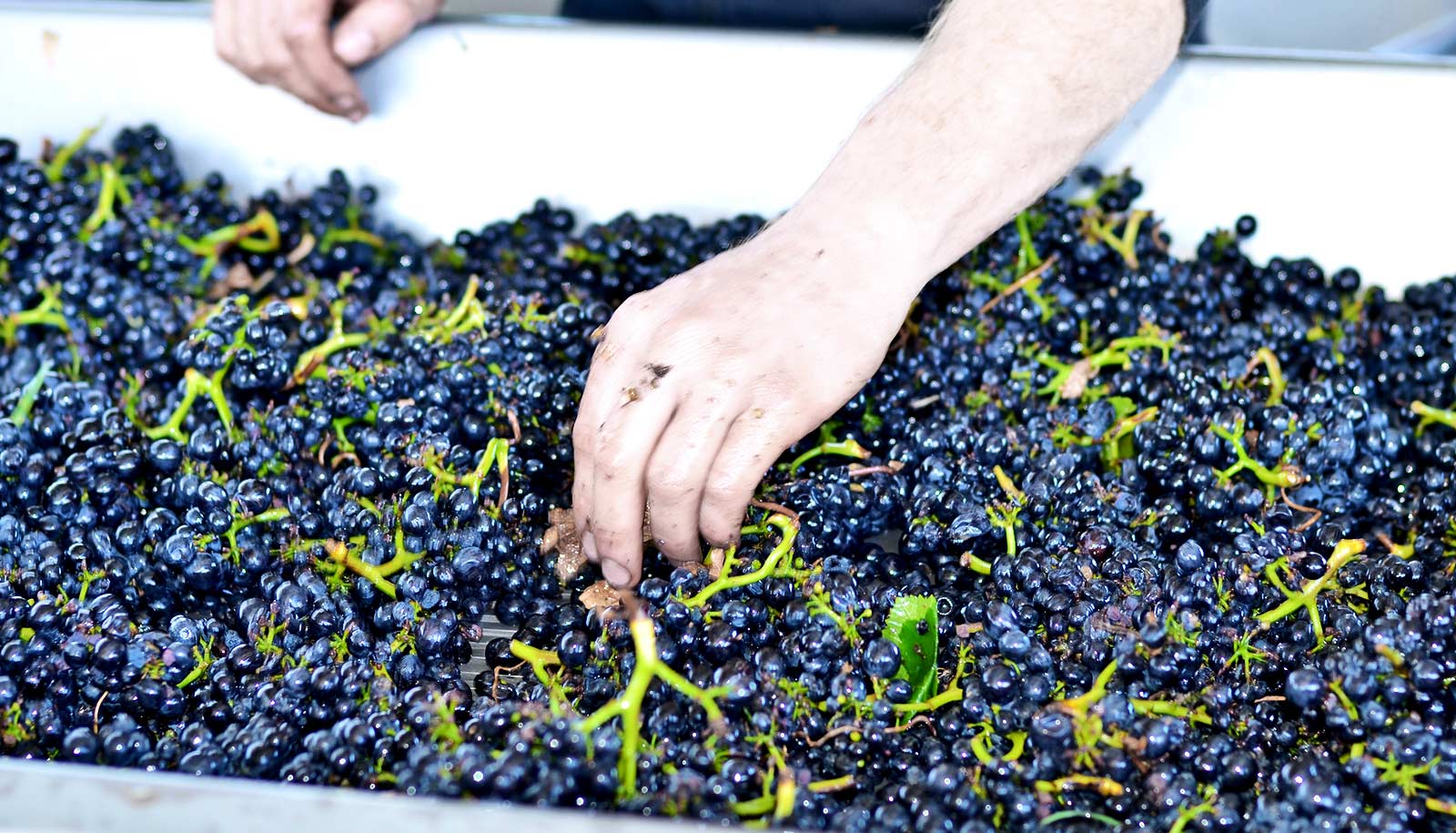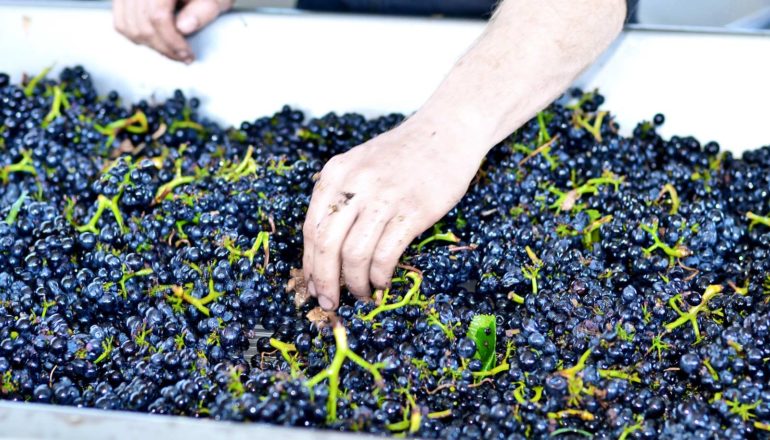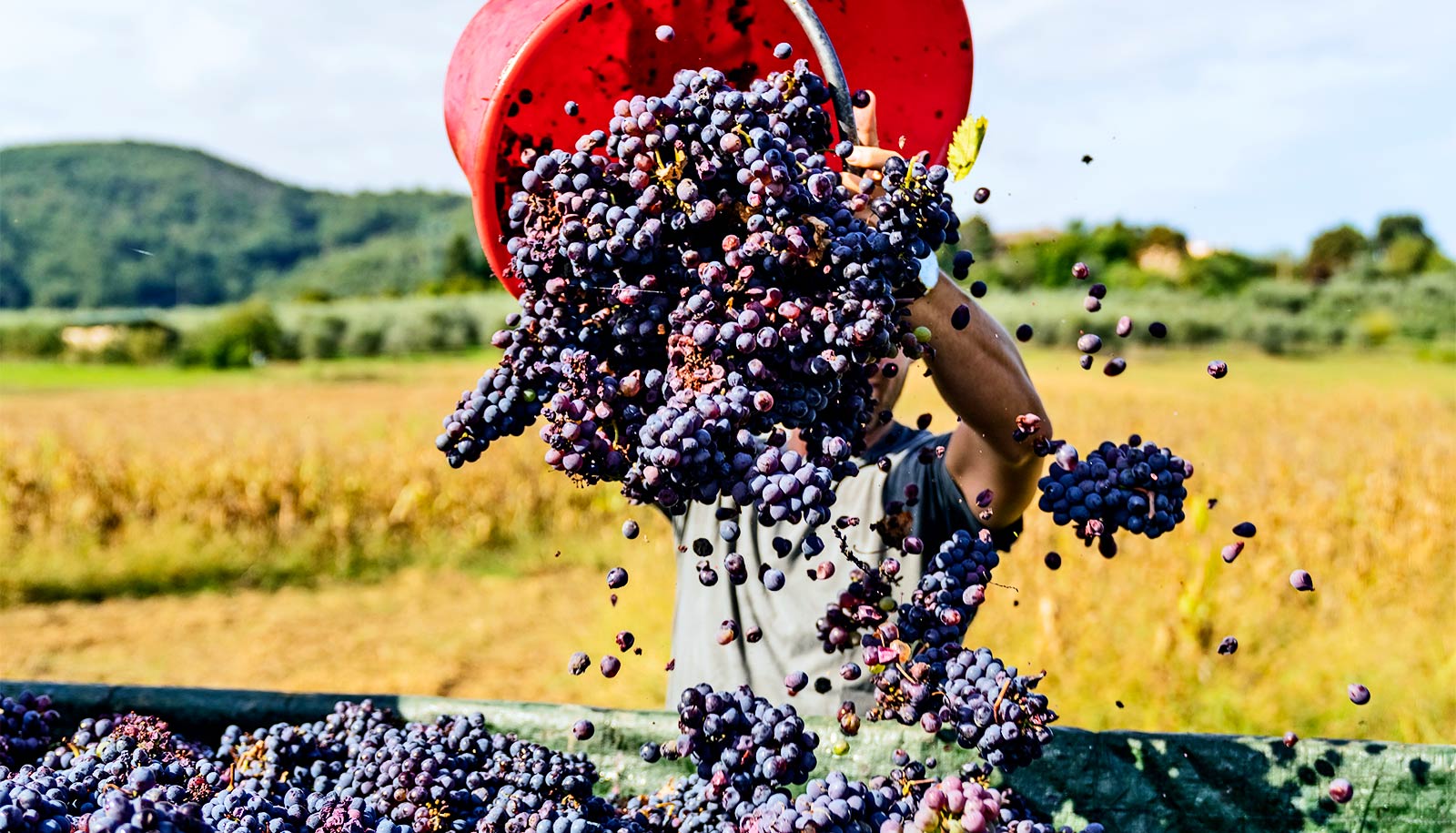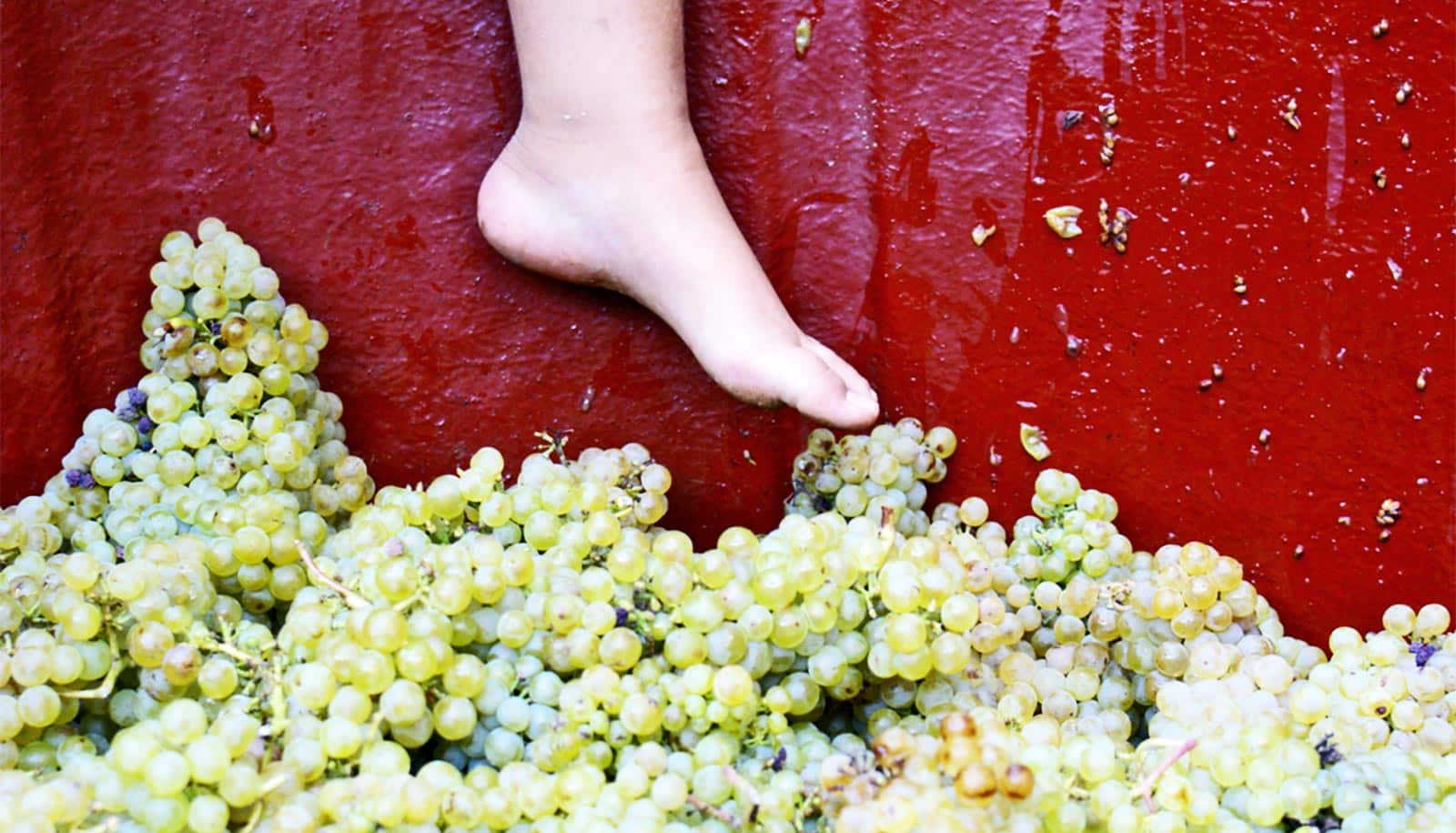
(Credit: Stefano Lubiana/Flickr )
A.I. sniffs out smoke damage in vineyards
"…with a relatively small investment and the right software models based on machine learning, winemakers could have a solution to smoke taint in their pocket."

Smoke from bushfires can ruin wine vintages, but new digital tools—some of which can attach right to a smartphone—could help both large and small winemakers reduce the damage, a new study shows.
Southern Australia, California, central Chile, Greece, and South Africa’s Western Cape are known for their wine—but these areas have all faced some of the worst bushfires on record in the last few years.
Bushfires can cause direct damage to vineyards, but smoke from nearby bushfires also taints the grapes on the vines. As any winemaker will tell you, wine gets its flavor from a range of complex interactions between the soil, grapevine, and its environment—creating its own particular style.
But grapes exposed to smoke can ruin a vintage, says plant physiologist and wine scientist Sigfredo Fuentes, an associate professor at the University of Melbourne’s School of Agriculture and Food.
“While smoke affects grapevine varieties differently, expert analysis of wines that are smoke-tainted describe them as having a ‘smoky’ aroma and ‘ashy’ aftertaste, particularly for Shiraz, Cabernet Sauvignon, Merlot, Chardonnay, and Pinot Gris wines,” he says.
“While flavor characteristics caused by the soil, plants, and environment are the source of the variety we appreciate in wines, these spoilage characteristics certainly make the wine less palatable for wine lovers.”
Smoke damage
Grapes exposed to smoke absorb volatile phenols—strong-smelling compounds that bind to sugars in the final wine. One of these, guaiacol, is responsible for those overwhelming “smoky” and “ashy” aromas.
If experts could identify or exclude smoke-tainted fruit from a vintage, winemakers could manage or even avoid these tastes and aromas. But the intensity and extent of smoke taint can vary dramatically, even within the same vineyard.
Winemakers need an accurate way to measure where smoke contamination will affect a vineyard, particularly as grape harvests typically occur in late summer—which coincides with peak bushfire season, Fuentes says.
“If grape growers and winemakers could assess in almost real-time which grapevine plants are smoke-contaminated and the level of smoke-taint present in grapes, as well as the potential wine made from them, it would be a game-changer for the industry,” he says. “This is particularly true given the increasing frequency of bushfires in major viticultural regions around the world as a result of climate change.”
As reported in the journal Sensors, Fuentes and colleagues show how tools like infrared thermal image analysis and machine learning modeling based on pattern recognition could help identify damaged grapes.
The team gathered data from seven grapevine cultivars involved in the smoke trials using thermal infrared cameras from canopies and near-infrared spectroscopy from the grapes to measure smoke contamination.
“Thermal infrared cameras and near-infrared spectrometers are increasingly available as drone-mounted or handheld instruments that can be attached to smartphones. This makes them more affordable for growers with analysis software in the form of apps,” Fuentes says.
“We realized that with a relatively small investment and the right software models based on machine learning, winemakers could have a solution to smoke taint in their pocket.”
In order to check the results, the team used highly sensitive laboratory equipment to compare the accuracy of the experimental data.
Speedy, low-cost detection
The researchers then used the data to develop two models: one to measure smoke contamination on the vineyard’s leaves, the other to measure smoke taint in the grapes themselves and wine produced from them.
Applying machine-learning pattern recognition and artificial neural networks (ANN), the team developed an infrared thermal image analysis model that predicted smoke contamination within canopies with 96% accuracy.
Fuentes says that to achieve this level of accuracy, researchers analyzed the pattern of leaf transpiration (where moisture is carried up through plants from roots and out of small pores on the underside of leaves) and then assessed as a proxy of thermal images, which smoke disrupts.
Machine learning algorithms were then able to detect the pattern with high accuracy and lower data processing.
The researchers used the second model to predict smoke-derived guaiacol using near-infrared (NIR) spectroscopy of grapes. The model is intended for use with handheld, consumer-grade equipment at close range to test fruit in real-time without destroying them.
This method makes high-accuracy testing far more accessible, Fuentes says. “The only real option for growers to currently assess potential smoke contamination is collecting a vineyard’s random berry samples for lab analysis using mass spectrometry, which is destructive, expensive, and takes a long time.
“Our testing shows these models can deliver an accurate result using software on a smartphone and a handheld near-infrared spectrometer that costs several thousand dollars—around 45 times less than a mass spectrometer.
Both these experimental models could be used in tandem—giving us a high-level map of smoke taint on leaves using drones and then following this with analysis of grapes using handheld devices, Fuentes says.
“Applications that use either of these models separately can make smoke taint visible to winemakers, quickly and accurately, and at relatively low cost,” Fuentes says. “Combined, they could give winemakers a highly-accurate analysis of smoke taint in their vineyard.
“This would give provide them with management strategies to reduce the contamination or separate harvesting of untainted grapes in order to minimize waste and produce a more valuable vintage.”
Additional researchers are from the University of Melbourne and the University of Adelaide.
Source: University of Melbourne
The post A.I. sniffs out smoke damage in vineyards appeared first on Futurity.
Share this article:
This article uses material from the Futurity article, and is licenced under a CC BY-SA 4.0 International License. Images, videos and audio are available under their respective licenses.


